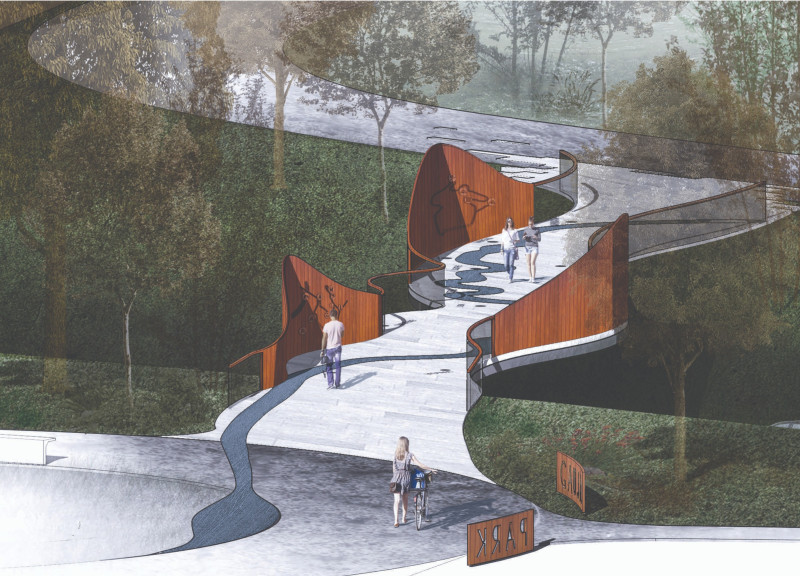5 key facts about this project
The Gauja River Bridge is located in the scenic Gauja National Park in Latvia. Positioned in Sigulda, a town celebrated for its outdoor sports and natural beauty, the bridge serves an important role in linking the park with nearby tourist facilities. The design aims to connect urban life with nature, encouraging visitors to explore the landscape along the river.
Architecture Concept
The design of the bridge focuses on enhancing connectivity. It seeks to create a direct pathway between significant features of the park and the town, making it easier for pedestrians to navigate the area. Inspired by the unique geography of the region, especially the nearby Erglu Cliffs, the bridge resonates with the natural setting and reinforces its relationship to the landscape.
Materiality and Aesthetic
Materials play a vital role in the bridge's design. Red-colored wooden panels echo the look of the Erglu Cliffs, providing visual continuity with the surrounding environment. These panels also serve a practical purpose as they contain information for visitors. This choice of material aligns the structure with its geological surroundings and enhances the overall experience for those who use the bridge.
Surface Treatments
The bridge's surface features lump stone tile, which has rough edges reminiscent of the rocky riverbed. This texture offers a tactile experience for pedestrians and encourages interaction with the natural world. Additionally, polished stone is used to reflect light in a way that mimics the river's surface. Supportive signage is incorporated, guiding visitors as they move through the space and marking significant locations along the river.
Design Details
Every aspect of the bridge reflects careful attention to detail. The placement of informational panels and walkways is designed to enhance visitor engagement. Pedestrians can learn more about the region as they traverse the bridge, connecting them to the cultural and natural heritage of the area. Each choice made during the design process contributes to a thoughtful integration of structure and landscape, enriching the overall journey for users.


























